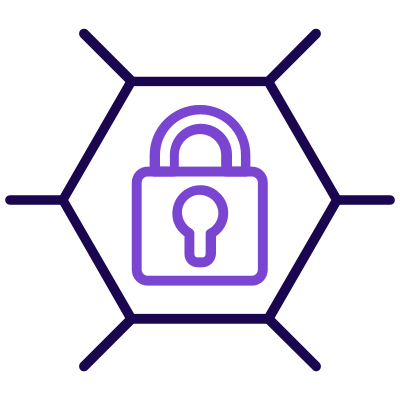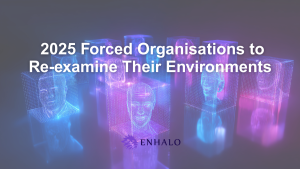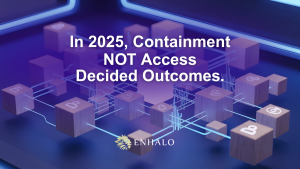Privileged Account Management stores all passwords in encrypted form and secures and manages all types of privileges using an intuitive administration interface.
- It allows you to grant permissions based on specific roles and responsibilities, ensuring only authorised personnel have privileged access.
- Through strategic deployment of Privileged Access Management (PAM), you significantly reduce the likelihood of unsanctioned access and the attendant risks of data breaches.
- PAM not only enhances security but also helps you comply with industry regulations and standards.
This article will explore its key features and functionalities and provide valuable tips and best practices for successful implementation.
Understanding The Importance Of PAM For Business

Businesses rely heavily on technology and cloud-based solutions to store and manage data. However, this dependence on technology also poses significant risks. Formidable security defenses are needed as cybercriminals tirelessly search for cracks to pry open – one such defense is Privileged Access Management (PAM).
The Risks Of Not Implementing PAM
- Data breaches: Uncontrolled access to privileged accounts increases the likelihood of data breaches as cybercriminals can exploit these accounts to gain unauthorised access to sensitive data.
- Insider threats: Employees with excessive or unnecessary privileges can abuse their access, intentionally or unintentionally, compromising data integrity and confidentiality.
- Compliance violations: Many industries have strict data protection and access control regulations. Failing to implement PAM can lead to compliance violations.
- Loss of intellectual property: Privileged accounts often have access to valuable intellectual property, trade secrets, and proprietary information. Without proper management, these assets risk being stolen or leaked, leading to significant financial and competitive losses.
Common Challenges And How To Overcome Them In PAM Implementation
- One common challenge is the complexity of managing and enforcing access controls across various cloud resources. With multiple users and different levels of access requirements, it can be challenging to ensure that the right people have the right access at the right time.
Start by conducting a thorough assessment of their access control requirements by identifying the different roles and responsibilities within the organisation and mapping them to the appropriate access levels. Then streamline the process and ensure consistent enforcement of access controls by clearly defining access policies and implementing a centralised access management system.
- Another challenge is resistance to change from employees accustomed to traditional access management methods.
To address this, invest in comprehensive training and education programs to familiarise employees with the benefits and importance of PAM. You can ensure smooth adoption and implementation by creating awareness and providing ongoing support.
Training and Educating Employees on PAM
While implementing a robust PAM strategy is essential, educating and training your employees on privileged access management is equally important.
- Employee Training Programs: Conduct regular training programs to educate employees about the risks associated with privileged access and the importance of following PAM best practices. Offer straightforward instructions and illustrative examples to aid employees in comprehending their contribution to upholding a secure environment.
- Awareness Initiatives: Elevate the understanding of PAM by leveraging internal communication platforms, including newsletters, email briefings, or display posters. Highlight the benefits of PAM and share success stories or case studies to emphasise its importance.
- Simulated Phishing Exercises: Conduct simulated phishing exercises to test employees’ awareness and response to potential cyber threats. These exercises help identify areas of improvement and reinforce the importance of following security protocols.
- Ongoing Education: Keep employees updated on the latest cybersecurity threats, PAM best practices, and changes to your business policies by means of consistent training sessions, webinars, or utilising online materials. Investing in employee education and awareness can create a security culture within your organisation, making PAM a shared responsibility.
Key Components Of An Effective PAM Strategy

Implementing PAM involves more than just deploying a PAM solution. It’s about deeply embedding best practices into the very fabric of your business. It’s about maximising the effectiveness of your PAM strategy to fortify your defenses and set up a durable barrier to shield your operation. Let’s summarise the core components:
- Rigorous Access Control: User roles and permissions should be allocated according to the least privilege principle, granting individuals only the access required for their specific duties – thereby minimising the risk of overexposure and potential breaches.
- Privilege Elevation: Facilitate temporary privilege elevation when necessary, allowing users to perform specific tasks without granting them ongoing access to sensitive accounts.
- Session Monitoring: Gain transparency into user actions through the monitoring and recording of privileged sessions. This visibility is crucial for detecting suspicious behaviour, potential security breaches, insider threats, and compliance infringements.
- Password Management: Enforce multi-factor authentication (MFA) for privileged accounts. MFA bolsters security by necessitating that users validate their identity through multiple verification methods, including a password combined with a distinct code from a mobile app or a hardware token.
- Privileged Access Reviews: Conduct frequent audits of privileged access to ensure permissions are current and reflective of the operational needs. This process helps to quickly identify and rectify any discrepancies or security risks and allow you to take immediate corrective actions.
- Structured Incident Response: Develop and document incident response procedures for handling security incidents related to privileged access. This includes defining roles, responsibilities, and communication escalation paths for swift and effective response to security breaches.
Choosing The Right PAM Solution For Your Business
The quest for the right PAM solution hinges on aligning it with your company’s distinct needs, budgetary limits, and scalability ambitions.
- Scalability: Ensure the PAM solution can scale with your business’ growth and accommodate future needs – consider the number of users, resources, and systems the solution can handle.
- Ease of use: Look for a user-friendly PAM solution that simplifies administrative tasks and reduces your IT team’s learning curve. Intuitive interfaces and streamlined workflows can enhance productivity and efficiency.
- Integration capabilities: Your PAM solution should integrate properly with your existing IT infrastructure and other cybersecurity tools. Seamless integration allows for centralised management and comprehensive visibility.
- Compliance and audit support: Make sure the PAM solution you choose offers strong compliance and auditing tools, such as detailed reporting, logging, and continuous monitoring capabilities. These features are essential for adhering to regulatory standards and proving compliance in audits.
- Vendor reputation and support: Research the PAM solution vendor’s reputation and track record. Look for positive customer testimonials and reviews, reliable customer support, and ongoing updates and enhancements.
Monitoring and Auditing Privileged Access

By setting up thorough monitoring and auditing protocols, you can swiftly spot and deal with possible security risks or compliance issues, lessening their impact on your business. This proactive approach ensures that privileged access is always under scrutiny, safeguarding your business’s critical assets and data.
- Real-time alerts: Set up real-time alerts for suspicious activities or policy violations related to privileged access. These alerts allow for early detection of anomalous activities and potential security incidents.
- Regular log analysis: Analyse privileged access logs regularly to identify abnormal or unauthorised activities. Look for patterns or anomalies indicating a security breach or misuse of privileged accounts.
- Automated reporting: Implement automated reporting capabilities to routinely produce detailed analyses of privileged access activities – tracking user behaviour, session lengths, and system access points. Such reports are invaluable for auditing purposes and in pinpointing compliance challenges.
- Continuous monitoring: Deploy continuous monitoring solutions to ensure vigilant oversight of privileged access, encompassing user actions, authentication efforts, and alterations within systems tied to privileged accounts. This relentless surveillance is key to maintaining a secure environment.
PAM in Context: Integrating with a Holistic Security Framework
While Privileged Access Management (PAM) stands as a pivotal component in safeguarding sensitive access points, its full potential is unlocked only when seamlessly woven into a broader framework of security measures. Bridging PAM with an array of other security practices not only amplifies protection but also creates a resilient, multi-layered defense system capable of confronting an ever-evolving threat landscape.
- Identity and Access Management (IAM): Integrate PAM with your IAM solution to streamline user provisioning, de-provisioning, and role management. This ensures that privileged access is granted based on defined roles and responsibilities.
- Security Information and Event Management (SIEM): Integrate PAM with your SIEM solution to centralise log data and correlate privileged access events with other security events. This provides a holistic view of your organisation’s security posture and boosts threat detection capabilities.
- Endpoint Security: Integrate PAM with endpoint security solutions to enforce least privilege access on software installations or system modifications at endpoints, reducing the risk of malware infections and unauthorised access.
- Data Loss Prevention (DLP): Strengthen your defense by integrating Privileged Access Management (PAM) with DLP systems to oversee and manage the flow of confidential information.







